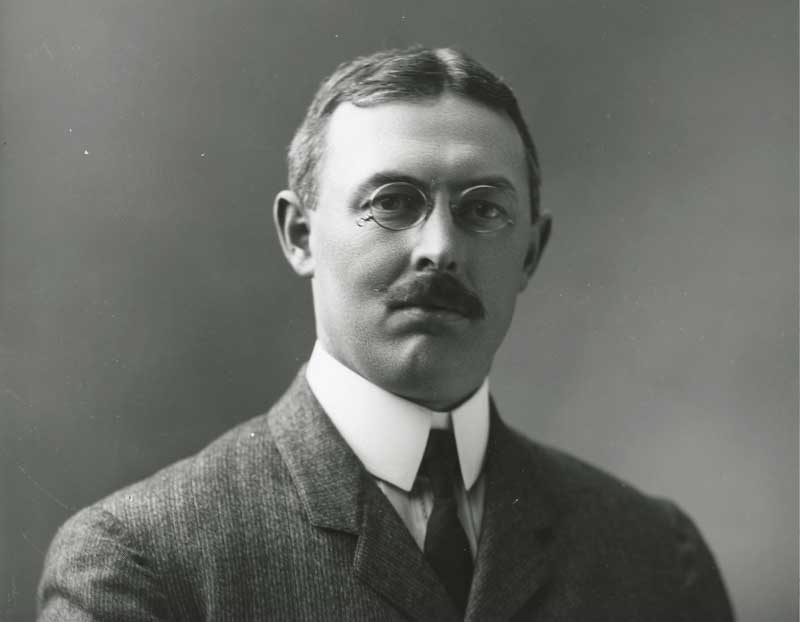Robinson probably adopted photograph as a hobby in the way many of his generation did after the introduction of the dry plate in the 1880s. Growing up in close proximity to Monhegan, he must have known the island well and viewed it as prime subject matter for his camera. In fact, most of Robinson’s surviving glass plate negatives and prints are of Monhegan Island, the few exceptions being those of Thomaston and Little Deer Isle.
Datable subject matter and period inscriptions indicate that Robinson’s photographs were taken in the 1890s, placing them in the same decade with most of the island pictures made by Triscott, Hudson, and Knowlton. Like these three contemporaries, Robinson chronicled every aspect of Monhegan—the harbor, the waterfront, fishing, Lobster Cove, the Headlands, Cathedral Woods, and the village. Reflected in the work of all four of these photographers is the view that in the 1890s Monhegan represented a vanishing way of life on the Maine Coast—one that was worthy of being recorded and celebrated. Of particular interest are Robinson’s photographs of fishermen at sea silhouetted against the fog, and his striking images of sunsets over Manana, precursors to Rockwell Kent’s sunset paintings of the next decade.
While Robinson’s teaching career took him to Massachusetts, New York, and Vermont, his August 3, 1929, obituary in the Rockland Courier Gazette stated that “he unfailingly spent his summers in Thomaston, occupying the old homestead, which is one of the town’s finest residences.” Almost sixty years later on July 25, 1988, James Julia auctioned the contents of the Robinson House. This accumulation of family objects dating back to the eighteenth century was so extensive that the auction notice did not mention historic photography. Fortunately, dealers Joe Reilly and Ken Shure recognized the significance of a battered brown suitcase containing Robinson’s negatives and prints, acquired them at the sale, and offered them to the Maine Historic Preservation Commission in Augusta, where they are now preserved.
When Robinson died in 1929, his obituary stated that “a very deep regard was manifested for him by everyone.” Now we are given the opportunity to appreciate the artful eye of this unheralded Maine photographer through his timeless images of Monhegan Island.
✮
A native of Portland, Earle G. Shettleworth, Jr. directed the Maine Historic Preservation Commission from 1976 to 2015 and has served as Maine State Historian since 2004.









